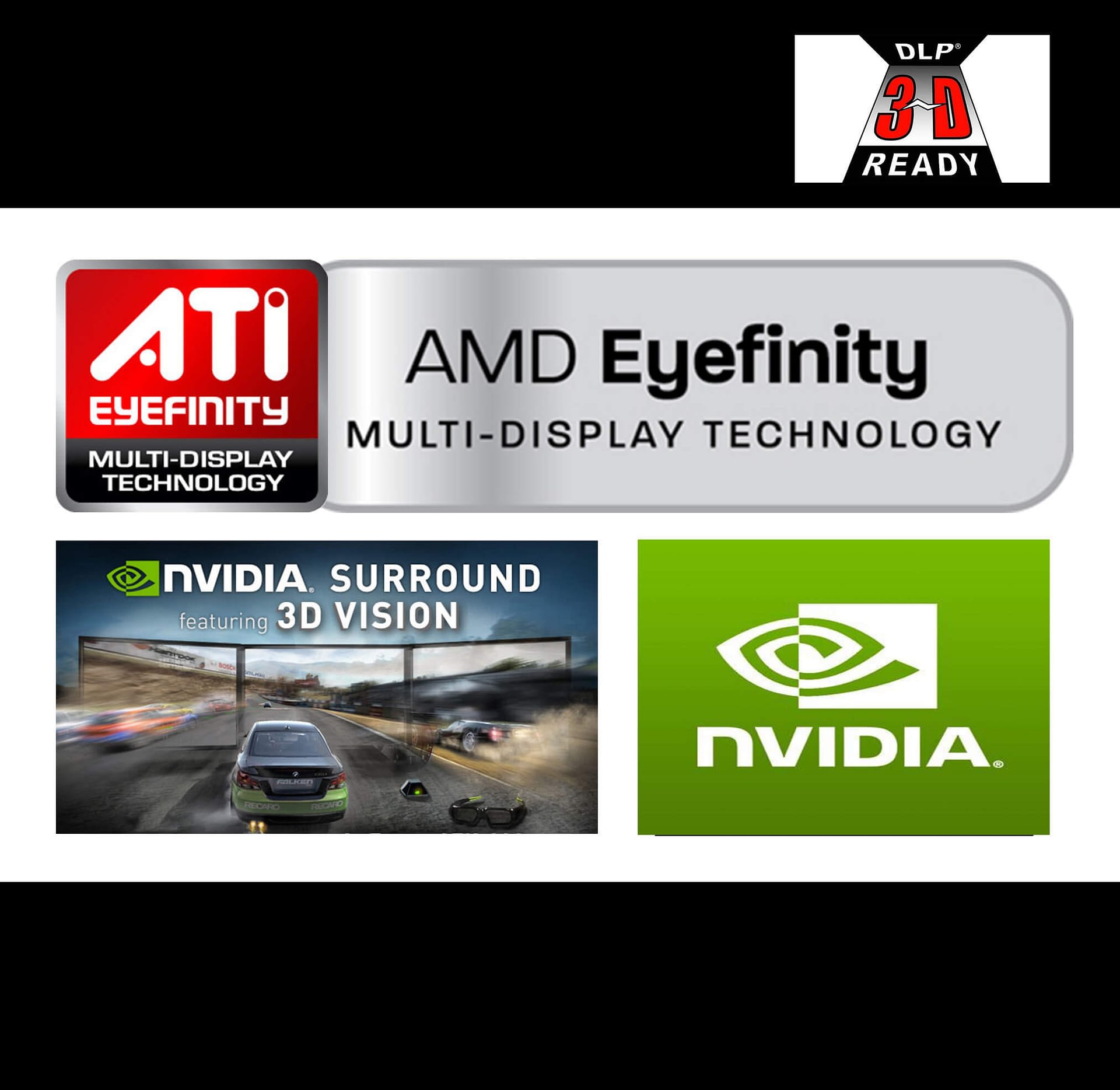

- Eyefinity edge blending drivers#
- Eyefinity edge blending update#
- Eyefinity edge blending software#
- Eyefinity edge blending Pc#
Ryan tells me he was working on this story behind the scenes for a while, talking to both AMD and Nvidia about problems they each had with 4K monitors. That means the compositing problems we’ve explored happen to CrossFire configs connected to 4K displays-not the regular microstuttering troubles, but the amped-up versions.
Eyefinity edge blending drivers#
AMD’s drivers handle the PQ321Q just like a dual-monitor Eyefinity setup. One input drives the left “tile” of the monitor, and a second feeds the right tile.

Since today’s display ASICs can’t support 4K resolutions natively, monitors like the Asus PQ321Q use tiling. As you may know, current 4K monitors are essentially the same as multi-monitor setups in their operation.
Eyefinity edge blending Pc#
This story is a bit of a powder keg for several reasons.įor one, the new marketing frontier for high-end PC graphics is 4K displays.
Eyefinity edge blending update#
Worse, these problems could be tough to overcome with a driver update because of the hardware bandwidth limitations involved. The bottom line is that Eyefinity and CrossFire together appear to be a uniquely bad combination. I need to do more testing in order to get a sense of how frequently this issue pops up. (That’s his screenshot above.) I’ve not seen this problem in my testing yet, but it looks to be a little worse and different from the slight “leakage” of an old frame into a newer one that we observed with CrossFire and one monitor. I’ve seen dropped frames with single-display CrossFire, but nothing nearly this extreme.Īlso, Ryan found a problem in some games where scan lines from two different frames become intermixed, causing multiple horizontal tearing artifacts on screen at once.
Eyefinity edge blending software#
About half of the frames just don’t make it to the display at all, even though they’re counted in software benchmarking tools like Fraps. The vast majority of the time, CrossFire with Eyefinity drops every other frame with alarming consistency. I’ve been doing some frame captures myself this week, and I can tell you what I’ve seen. Turns out that the problems are a bit different, and even worse, with multiple monitors. We already know that non-frame-paced CrossFire solutions on a single display are kind of a mess. That’s presumably why AMD’s current frame-pacing driver can’t work its magic on anything beyond a single, four-megapixel monitor. The method of compositing frames for Eyefinity is simply different. Thus, a CrossFire team connected to multiple displays must pass data from the secondary card to the primary card over PCI Express. We noted this fact way back in our six-way Eyefinity write-up: the card-to-card link over a CrossFire bridge can only transfer images up to to four megapixels in size. That’s interesting because, technically speaking, multi-display CrossFire setups work differently than single-monitor ones. Ryan did so and published the first public results. However, getting meaningful results from multi-display setups is tricky when you can only capture one video output at a time, and, rah rah other excuses-the bottom line is, I never took the time to try capturing, say, the left-most display with the colored FCAT overlay and analyzing the output. We first published results using Nvidia’s FCAT tools back in March, and we’ve used them quite a bit since. Let’s start with the obvious: this story is news because nobody has ever looked at frame delivery with multi-display configs using these tools before.

I have been talking with Ryan and looking into these things for myself, and I think I can explain. I noticed that many folks reacted to our news item by asking why this story matters, given the known issues with CrossFire that have persisted literally for years. AMD has been forthright that it has more work to do in order to make CrossFire work properly with multiple displays, higher resolutions, and DirectX 9 games. They were partially resolved-for single displays with resolutions of 2560×1600 and below, and for DirectX 10/11 games-by AMD’s frame pacing beta driver. Those problems look superficially similar to the ones we explored in our Radeon HD 7990 review. In the article, Ryan revealed some problems with using a Radeon CrossFire multi-GPU setups and multiple displays. Earlier this week, we posted a news item about an article written by Ryan Shrout over at PC Perspective.


 0 kommentar(er)
0 kommentar(er)
